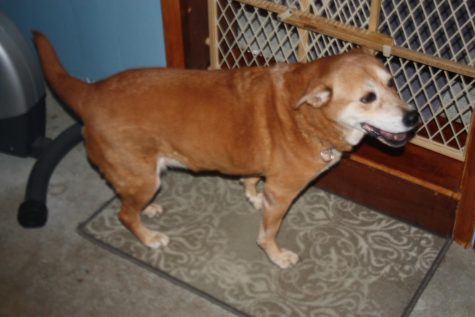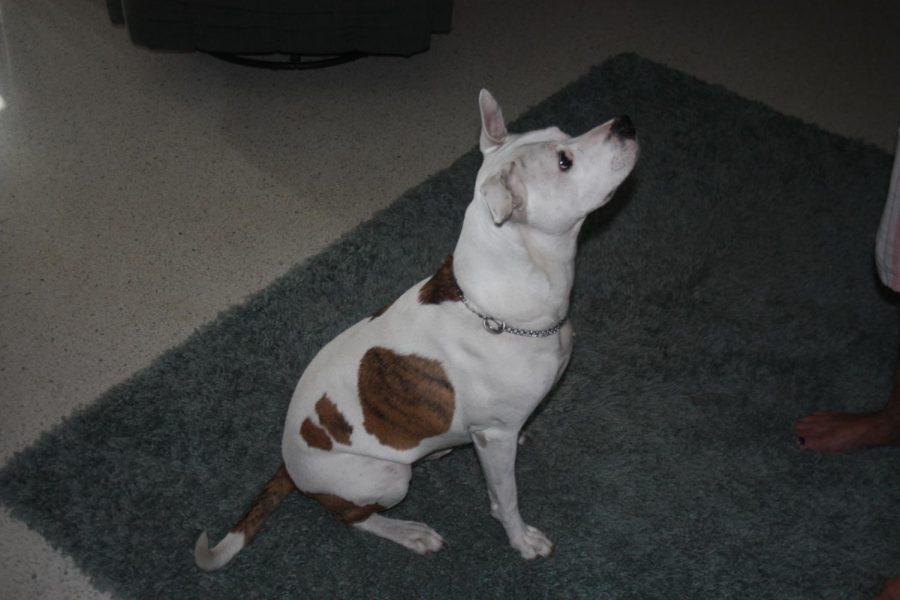Animals feel pain too
Disco Joe just wants a treat
More than 45 million household pets suffer from chronic or acute pain. Unlike humans, they cannot say where it hurts. To raise awareness on how to recognize and manage pain in animals, the International Veterinary Academy of Pain Management (IVAPM) declared September Animal Pain Awareness month (https://ivapm.org/animal-pain-awareness-month/). The annual campaign coincides with human medicine’s Pain Awareness Month, but pet parents should be aware of their pets’ pain year-round.
According to Jennifer Johnson, VMD, CVPP and President-Elect of IVAPM, “It’s often very hard to know when an animal is suffering. Their signs of pain are subtle and it’s also part of their survival instinct to hide the pain. That’s why it is so important for veterinarians to conduct pain assessment exams at least annually and certainly as part of regular exams. We know that chronic pain can have significant detrimental effects on life span and quality of life. By spotting pain early, veterinarians can better treat and manage pain.”
The IVAPM offers the following information for veterinarians and pet parents to recognize the most common signs of pain:
- A slowdown in their activity.
- Not going up or downstairs or difficulty standing after lying down can be signs of osteoarthritis.
- Less playtime. Not playing as much as usual can signal pain in joints, neck or back.
- Less jumping. Reluctance to jump onto surfaces — this especially applies to cats who normally love exploring high places. If they are not doing this, it is likely because of hip or back pain.
- Decreased eating and drinking. While the loss of interest in food or water can signal a much more serious medical issue, it can also be a sign of mouth or abdominal pain.
- Changes in grooming behavior. Increased grooming or licking of an area on the body may indicate pain in that area or indicate referred pain. Decreased grooming, especially in cats, may indicate that it is too painful to twist around.
- Changes in urine or bowel movements could be related to pain and may indicate the inability to maintain the position to eliminate. Cats may also have trouble climbing in and out of the litter box.
- Increases in respiration may be caused by pain.
- Changes in routine. Changes in sleeping patterns and favorite places to rest may also indicate your pet is in pain.
Options for Pain Management:
- Adopting a healthy lifestyle for your pet is the best preventive medicine and path to a longer, healthier and happier life for animals, just as it is for humans. Make low impact exercise and a healthy diet part of your pets’ daily routine.
- Consider/ask your vet about non-pharmacologic options for pain management including acupuncture, pulsed electromagnetic field therapy, laser therapy and chiropractic care. In the long run, it can be a more cost-effective approach to pain management and relief than traditional medications.
- Bottom line: pet parents should consult their veterinarian if they see any changes in their pets’ behavior and health.

Jessi is a happy dog
Johnson states, “Remember that any behavioral change can indicate a physical problem, not just that a pet is ‘grumpy,’ ‘old’ or ‘depressed’. The veterinarian is the best person to evaluate your pet for potential painful conditions. If you notice anything, please consult your veterinarian for a full examination, including a pain assessment and talk about the findings.”
Anthony Spatola, one of the Vet Tech instructors at HCC adds that a source of pain could be a lack of dental hygiene. Spatola recommends regular cleaning, dental chews and brushing to prevent a serious build-up of dental calculus along the gum line and the teeth themselves.
According to Spatola, “This build-up can lead to the entrance of bacteria from the mouth to make its way underneath the gum line. As a result, subgingival bacteria can lead to gingivitis, periodontitis, and even tooth root abscesses! Periodontitis and abscesses can most definitely lead to the need for tooth extractions. Not to mention the fact that bacteria under the gums will eventually enter the bloodstream, which can affect numerous internal organs.”
He goes on to say that signs of mouth pain in pets include a resistance to eat hard food, dropping kibble, pawing at their mouths and facial swelling when infections form.
“By the time any of these symptoms usually occur, [the pets] have more than likely developed severe dental disease.”
Just as Johnson does, Spatola stresses the importance of regular veterinarian visits for your pet.

Jason Turner is a Staff Writer for The Hawkeye
Jason Turner grew up and went to school in New Mexico. While in school, he worked at the radio station...


Michelle Pavao • Mar 6, 2020 at 10:09 pm
I have a dog and I can always tell when my dog is not feeling well, but what I actually can’t tell is how much pain she is feeling because obviously she cannot speak to me. I agree that animals should have annual testing done to prevent animals from pain due to an unnoticed medical issue within the animal. I agree that animal’s pain should be taken a lot more serious and into consideration.
Jay • Jun 6, 2023 at 8:11 am
I agree as well
Chloe Zentkovich • Oct 10, 2019 at 8:27 pm
I didn’t realize how much pain an animal could be in until now, this is some great advice! It’s important to realize what’s going on in your pet’s health to keep them happy and healthy. Many times as humans, we forget that pets can have pain just like us, or a disease even. It’s so important to keep going to the vet regularly and watching out for your fur babies! I will definitely be checking up on my cat’s behavior since she is about 15 years old now.